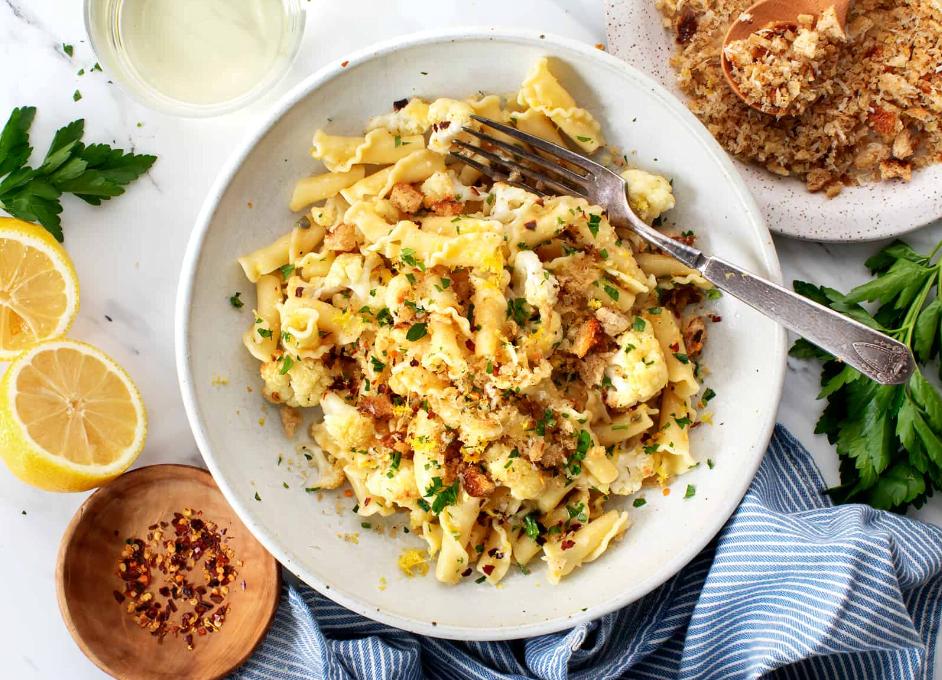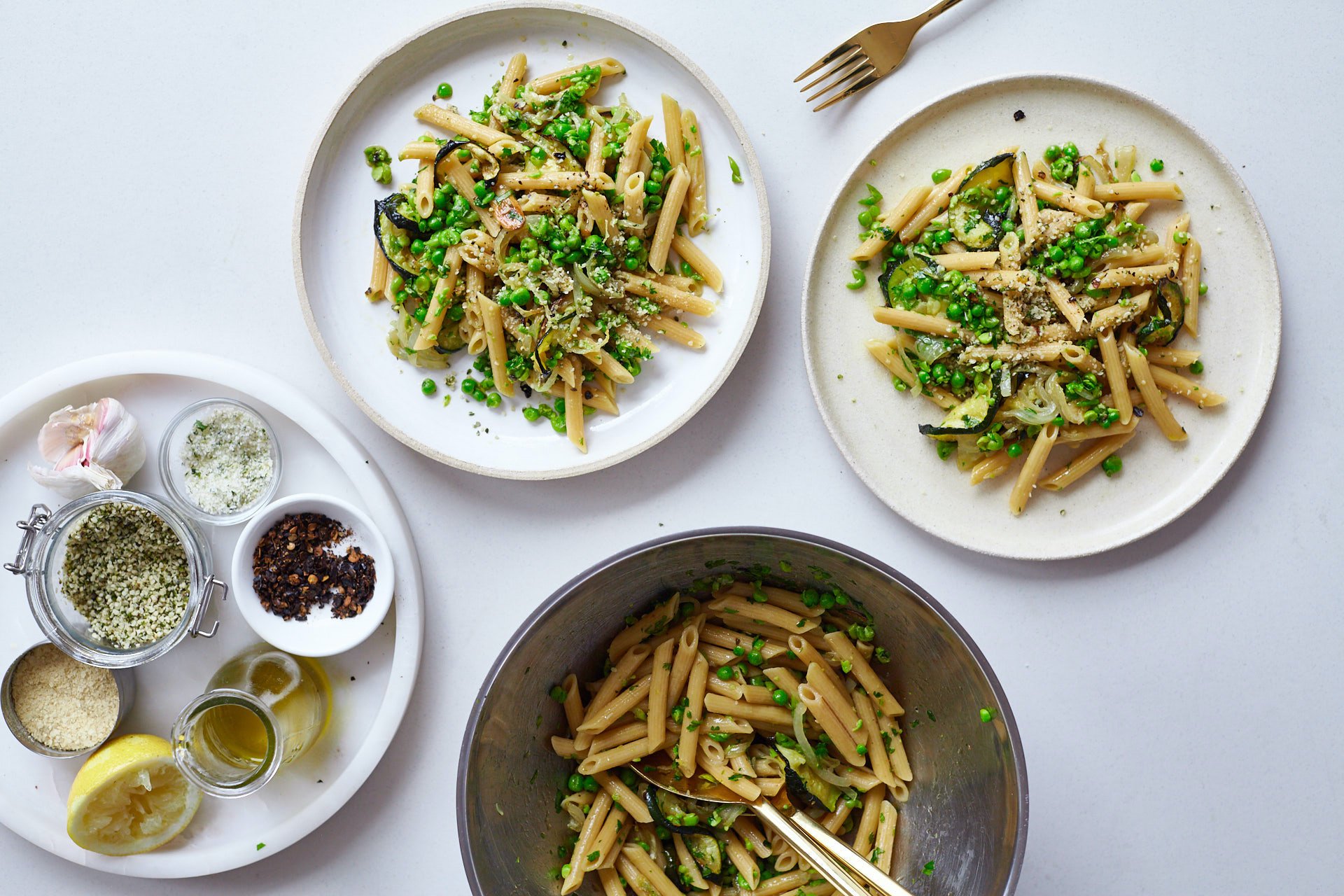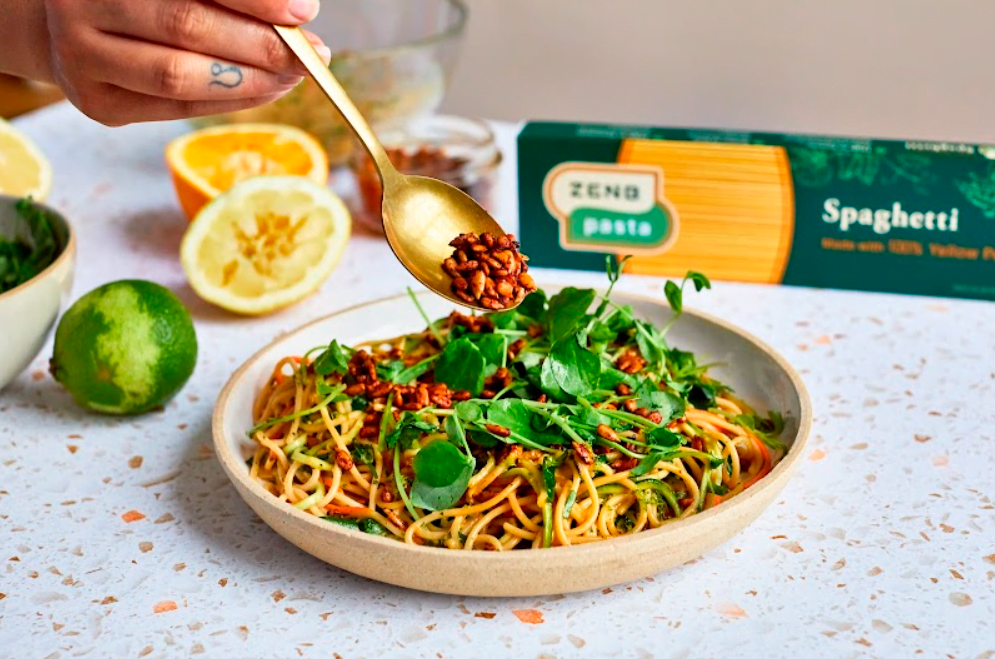Few foods comfort the soul quite like pasta. Whether you yearn for a robust, comforting dish to lift your spirits during winter or something more fiery for an Al Fresco summer night, pasta always hits the spot.
However, for those seeking a diet rich in protein and lower in carbs, traditional pasta made from wheat flour and water might not be the most strategic choice.
A standard serving offers 25g of carbohydrates compared to a meagre 5g of protein. But fear not; there’s a way to shift the balance back in your favour: high-protein pasta.
Often made from beans, peas, and lentils, high-protein pasta not only caters to health-conscious consumers but also opens doors for those with gluten intolerance.
All the different high-protein pasta options
There aren’t many foods these days that don’t claim to be high in protein, and some brands are reaching when it comes to their branding. So, what sets high-protein pasta apart from your standard off-the-shelf shapes?
High-protein pasta generally contains a minimum of 7g of protein per serving, although you ideally want to be looking for a starting point of 10g.
While that may seem like a lot of protein for a humble bowl of plain pasta, several varieties far surpass that bicep-bulging benchmark.
Yellow Pea Pasta
Before you ask, no, yellow peas are not the same as chickpeas. In fact, they outperform their better-known counterpart in terms of calorie count and levels of vitamins A, C, and K, as well as nearly all of the B vitamins.
Yellow peas are the dried, peeled and sometimes split part of the pea plant. This legume is super sustainable, nutrition-packed and gluten-free, making it a popular choice for high-protein pasta.
A single 85g serving can pack up to 17g of protein and 11g of fibre, all while preserving a smooth, authentic, yet subtly nutty taste.
The Gymfluencers recommendation: ZENB Yellow Pea Pasta
It’s no secret gluten-free alternatives can be dry and mealy on the palate. That’s why picking the right one is essential for achieving that chef’s kiss effect with every mouthful.
ZENB’s Yellow Pea Pasta is a favourite at Gymfluencers. Our users rave about its superior taste and texture when pitting the pasta against other brands.
If you value authenticity, you’ll certainly value ZENB.

Bean Pasta
Bean pasta might sound vague, but that’s because various types of beans can be used to create it, including black beans, lupin beans, and fava beans.
In addition to the high-protein, low-carb tradeoff, bean kinds of pasta are also rich in essential nutrients such as iron, zinc, and magnesium. The protein content provides a steady release of energy, making it a nutritious and satisfying choice.
Lentil Pasta
Whether you favour green or red, lentil pasta is one of the most popular high-protein alternatives.
That’s likely because people are familiar with using lentils in veggie dishes like curries, stews and soups.
As a member of the Fabaceae family, lentil pasta contains between 11-12g of protein per serving and is rich in essential nutrients, including folate, iron, phosphorus, and potassium.
Chickpea Pasta
Chickpeas will be a familiar ingredient for anyone incorporating more plant-based protein into their diet.
Chickpea pasta mirrors the texture of traditional pasta but with significantly fewer carbs and more fibre. In every bowl of this protein-packed beauty, you’ll discover around 14g of protein.
Studies also suggest chickpeas help control blood sugar and support gut and heart health.
Edamame Pasta
Upgrading edamame beans from your starter to your main can have huge health benefits. Widely acknowledged as a plant-based protein powerhouse, this gluten-free, low GI option can offer north of 20g of protein per serving.
It’s rich in antioxidants, good for the bones, and clings on to your favourite pasta sauces, supplementing the meal with a nutty and earthy taste.
Fava Bean Pasta
Fava beans play an unlikely starring role in one of the most notorious lines from Silence of the Lambs, and it seems Hannibal Lecter knew a thing or two about nutrition because these beans make for a small but mighty high-protein pasta alternative.
With three times the fibre, two times the protein and half the carbs of traditional wheat pasta, it has become a popular choice among health-conscious foodies.
Plus, its buttery taste compliments creamier pasta dishes such as a traditional carbonara. And by the way, the supermarket versions are not traditional.
Cauliflower Pasta

This cruciferous vegetable-turned-pasta is crammed full of essential nutrients, such as vitamin C, vitamin K, and folate.
However, the precise protein content in cauliflower pasta can vary depending on the brand. In general, a standard serving typically provides around 8-14g of protein.
Cauliflower pasta has a mild and neutral taste, giving you the flexibility to pair it with any sauce you fancy.
Corn Pasta
As the name suggests, corn pasta is made from – you guessed it – corn, or more precisely, corn flour or cornmeal.
Naturally gluten-free and sporting a distinctive yellow colour, it features a sweet and nutty flavour.
If texture tops your list of non-negotiables, corn pasta might not be the one for you. It can be slightly chewier, although it compensates through being an excellent source of fibre, B vitamins, and antioxidants.
Quinoa Pasta
Quinoa pasta is made by grinding quinoa seeds into flour and shaping it into the oh-so-familiar pasta shapes you see on supermarket shelves.
This nutrient-rich whole grain is widely recognised as a superfood, and rightfully so.
It’s among an elite group of plant foods that are complete proteins, containing all nine essential amino acids.
Kamut Pasta
Kamut, or Khorasan wheat, as it’s otherwise known, is an ancient variety of hard wheat double the size of its bog-standard cousin.
Unlike many of the other types of high-protein pasta highlighted in this list, kamut pasta is unfortunately not gluten-free.
Nevertheless, it remains popular among pasta aficionados for its rich, creamy taste and high protein content, offering anywhere from 8 to 12 grams per portion.
Rice Pasta
Yes, you read that correctly. Rice pasta is a thing, and it’s quite popular. With a softer texture and delicate taste, rice pasta proves an excellent gluten-free alternative to regular pasta.
Brown rice pasta, in particular, offers more fibre and nutrients than refined pasta. Although it doesn’t quite hit the same heights as others on this list on the protein front, it’s readily available in most supermarkets and specialist health food shops.
Egg Pasta
It’s no secret that incorporating eggs into your diet is a great way to boost your protein intake. However, if you aren’t a fan of eggs boiled, scrambled, or sunny side up, egg pasta is a clever way to sneak them in without your taste buds noticing.
On average, egg pasta contains 9.8g of protein per serving. However, bear in mind it’s also higher in carbs and contains gluten, so steer clear if you’re intolerant.
How To Choose Which High-Protein Pasta To Try?

It’s clear there’s a lot of choice when it comes to high-protein pasta alternatives – so how do you choose which varieties to try?
First off, consider your allergies and personal preferences. For example, if you’re gluten intolerant, that immediately narrows down your search.
There might also be a minimum amount of protein you’re aiming to hit with each meal. If that’s the case, you’d likely gravitate towards yellow pea, edamame, or lentil pasta.
A little research goes a long way and might just save you the disappointment of an unsatisfying meal. Read the labels, check out the product’s reviews, and do your homework.
Is High Protein Pasta Better Than Wheat Pasta?
No one is trying to demonise pasta, and determining whether high-protein pasta is better than wheat pasta depends on individual goals and dietary needs.
If you’re looking to up your protein and slash your carbs, then yes, it is. Similarly, if you’re celiac or follow a gluten-free diet, it’s also a great way to keep pasta on the menu.
How To Cook High-Protein Pasta
Preparing high-protein pasta is similar to cooking traditional pasta, but there are a few subtle differences to bear in mind.
The key consideration is the timing. In general, high-protein pasta requires less cooking time but may benefit from a bit more stirring, so keep your eyes on the prize and don’t leave it bubbling unaccompanied for too long.
Each product is different, and as a rule of thumb, it’s best to check the back of the packet for precise cooking instructions.
Does Protein Pasta Help Build Muscle?
Absolutely! Protein is crucial for building lean muscle, and some high-protein pasta provides over 20g per serving.
Adding light sauces, low-fat cheeses, and lean meats is a great way to further increase that figure.
For those following a plant-based diet, many protein pasta alternatives, such as yellow pea pasta, serve as clever cupboard essentials for upping your macros.
Is Protein Pasta Good After A Workout?

Eating a high-protein meal after a workout helps replenish amino acids, the building blocks of proteins, which help promote muscle recovery and, ultimately, gains.
Combined with the glycogen-boosting magic of carbohydrates, you’ve got yourself a complete post-workout meal.
The beauty of protein pasta is that it’s so versatile. You can either enjoy it with a simple sauce as a standalone meal or use it as a foundation for a more elaborate dish.
Final Thoughts
Whether you’re gluten-free, longing for more protein, or just want to eat a diet rich in whole foods, protein pasta is an incredible ace card to keep up your sleeve.
From packet, to plan, to plate, you’re just minutes away from enjoying a nutrient-dense meal that delivers protein galore. Buon appetito!



